MO Tested: Bell Star Helmet Review
Bell has got four new Star helmets: Pro Star, custom-fit Star Carbon, Race
Bell has got four new Star helmets: Pro Star, custom-fit Star Carbon, Race Star, and the one under review here, the plain old Star. They range in price all the way from $1299.95 for the most expensive Pro Star to $499.95 for the Pace Orange/Black Star pictured. Compared to the others, the Star’s eye port is more oriented to upright riding than to peering out the top while tucked-in behind the bubble at Daytona. Though it’s of course a tad heavier than the more expensive Stars, it seems no heavier than a comparable premium helmet.
Bell Star Helmet
| Aesthetics | 9.0/10 |
| Protection | 10/10 |
| Value | 9.0/10 |
| Comfort/Fit | 9.5/10 |
| Quality/Design | 8.0/10 |
| Weight | 8.5/10 |
| Options/Selection | 10/10 |
| Innovation | 8.0/10 |
| Weather Suitability | 8.5/10 |
| Desirable/Cool Factor | 8.0/10 |
| Overall Score | 88.5/100 |
Update: The base Star reviewed here has been replaced by the Star DLX MIPS, and the Race Star DLX Flex is the only other Star in Bell’s line-up. MIPS is “Multi-directional Impact Protection,” an advanced technology liner which reduces rotational forces in a crash. DLX denotes that the helmet comes with a Panovision Photochromic faceshield – a fantastic thing to have that negates the need to carry clear and dark visors. The basic shell shape and mechanicals remain the same.
My personal noggin prefers the long oval shape of an Arai Signet Q or Shoei RF, and that seems to be the shape Bell adopted for this Star. Right out of the box, it was a bit tight to pull on over the old melon, but once in place it was snug yet way comfortable for its two-hour maiden run and has remained so for the month or two that I’ve been wearing it; it actually has a mm or two more room than I require at my horn roots and skull base, where many previous Bells have been just tooooo snug.
The 35mm cheek pads mine came with seem just right, though options are available. The ear pockets seem a bit larger than some, which is nice if your ears begin to squirm like mine do on long rides, or if you want to install speakers. Wire-frame glasses slide in easily enough, thicker-framed sunglasses require more finagling and temple gouging.
You get the typical closeable brow and chin vents with exhausts out the back, and the Star’s airflow is unremarkable; neither more nor less breezy than the typical full-face. My main criterion for a helmet is always comfort, and by that measure this Pro for me is a success.
Like most Bells over the years, its problems are in the details. I took the shield off when I first got it, for fun, and it took more than an hour of fiddling to figure out how to replace it. The shield comes off and the round black hinges that attach it to the helmet come off the shield, too. I can’t do the Rubik’s cube either, though, so it could be a personal problem. Once I figured it out, it works fine and makes sense… but it makes you wonder what was wrong with Bell’s old perfectly good mechanism where you can see and press one simple lever and snap the thing out? The new mechanism slides fore and aft a bit like a car seat as the shield travels open and shut, maybe so the shield can seal better than the previous one? That would be great, but this shield seals no quieter than before. Not that it’s particularly loud. Neither was the old one.
There’s a cracked position for damp or hot days, there are also Pinlock posts. We’re also curious why Bell put the visor tab, the thing you thumb to open and close it, in the middle of the shield instead of on the left like every other full face since Bell invented the first one? Do some riders use their brake hand to open and close their visor?
The little magnet in the end of the strap is a cool idea, but the one on my old Bell Revolver fell off while it was almost new, and I have tucked the strap away under my chin ever since. The one on my new Star fell off too. Amazingly, I found both halves while weedwacking and glued it back.
All minor issues and largely the complaints of a coddled journalist.
There is one hugely good thing about the Star, unobtainable on nearly all helmets (except some Shoeis far as I know) which completely negates the fiddly shield mechanism: The photochromatic Transitions shield. It’s tremendously convenient to never have to change shields when the night catches you out.
With a Transitions shield snapped in the old eyeport, I would definitely give this one two big thumbs up. As she stands, I need both opposable thumbs and all my fingers and faculties to operate it. A really good helmet on the verge of being a great one but for a couple of details.
Table of Contents
BELL Star DLX MIPS
Now with MIPS liner and photochromic shield, the Bell Star DLX MIPS improves upon the original Bell Star – which was already an outstanding helmet.
Bottom Line
- Photochromic shields are hard to come by and excellent to have
Race Star DLX FLEX
The Race Star uses a 3k carbon fiber shell for even less weight. Bell’s premium racing lid.
Bottom Line
- Top-line performance, least weight
Bell Star | |
| + ProsProTint shield is to die forGreat, snug fit for intermediate ovalsGreat style and graphics | – ConsShield mechanism can be finickySnug ingress and egressPricing has crept up with the tech |
FAQ
Are Bell helmets good?
Well, that all depends. Like most manufacturers, Bell makes some very nice helmets (like the Stars reviewed here, but then it also makes some less stellar helmets, mostly for fashion’s sake, that we more, ahhh, experienced motorcyclists are less enthused about. For example, check our review of the Bell Eliminator here. As to their being “good,” all the Bells have passed US Department of Transportation tests, the Stars are Snell rated, and any of them are way better than no helmet.
How long do Bell helmets last?
This question comes up a lot. It depends. Bell’s website has a general recommendation of replacing your helmet every three years.
The Snell Foundation says: Unused helmets stored in good condition do not automatically expire after five years. Replacing helmets every five years is a judgement call based on testing helmets used by the California Highway Patrol by Dr. George Snively. Wear and tear, the simple act of putting on and taking off helmets, damage the comfort pads and energy absorbing foam liner over time. Helmets with worn-out pads are at least one to two sizes larger than helmets in new condition. A poorly fitted helmet makes it more likely that the helmet will shift too much or even come off the head during a crash impact. For these reasons, Snell recommends replacing helmets after five years of normal use.
Shoei, a leading premium helmet maker, puts out this official word: A helmet should be replaced 5 years from date of purchase or 7 years from date of manufacture, whichever comes first. This replacement recommendation is based on a consensus by both the helmet manufacturers and safety standards. Glues, resins and other materials used in helmet production can affect liner materials. Hair oils, body fluids and cosmetics, as well as normal “wear and tear” all contribute to helmet degradation. Petroleum based products present in; cleaners, paints, fuels and other commonly encountered materials may also degrade materials used in many helmets possibly degrading performance. Additionally, experience indicates there will be a noticeable improvement in the protective characteristic of helmets over a five-year period due to advances in materials, designs, production methods and the standards. Thus, the recommendation for five-year helmet replacement is a judgment call stemming from a prudent safety philosophy.
As for us, we think just because a helmet is old doesn’t mean it’s unsafe if it’s still in good shape and hasn’t been dropped or pre-crashed. Keep it clean and safely stored, and there’s no reason a premium Bell can’t last many years. But you’ll probably see a flashy new helmet before then that you’ll have to have, so it’s almost a moot point.
Where are Bell helmets made?
The tag in the Bell Star reviewed here says Made in China.
Bell Star/ Race Star Specifications | |
|---|---|
| Price | $525 – $840 |
| Sizes | XS, S, M, L, XL, XXL |
| Shell sizes | 5 |
| Colors | too many to list, and helmade custom graphics available here |
Additional Resources
MO Tested: Bell Race Star Flex Helmet Review
MO Tested: Bell SRT-M Helmet Review
We are committed to finding, researching, and recommending the best products. We earn commissions from purchases you make using the retail links in our product reviews. Learn more about how this works.
Become a Motorcycle.com insider. Get the latest motorcycle news first by subscribing to our newsletter here.
More by John Burns



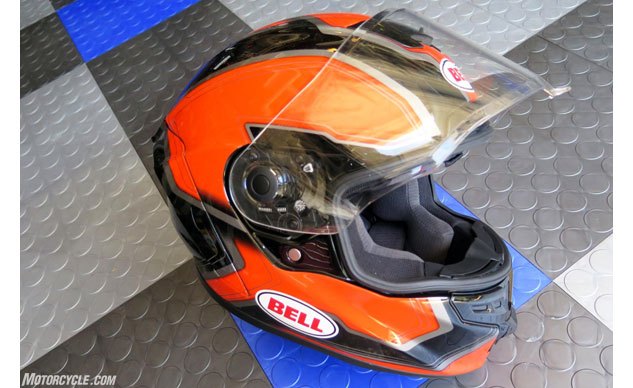
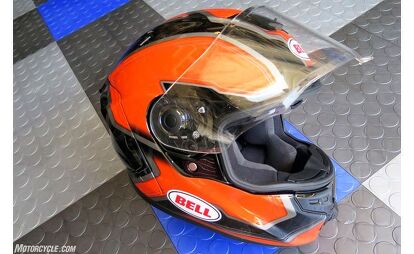

















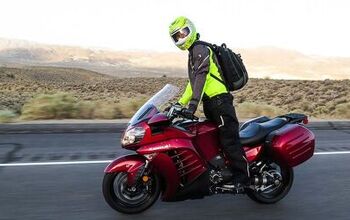



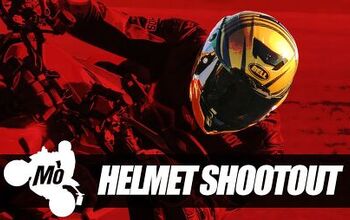
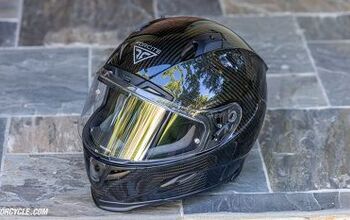
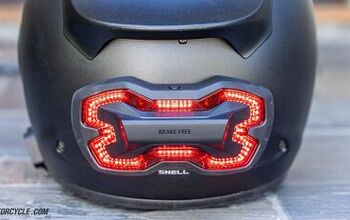
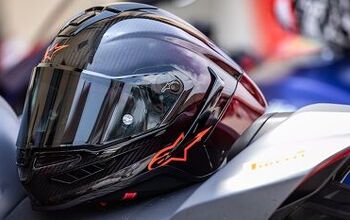










Comments
Join the conversation
I sometimes use my right hand on my visor when I'm at a stop and still in gear. Right foot is on the rear brake. Do these have Bell's flex liner deal, the thing that's supposed to absorb rotational acceleration? Seems like a good idea.
A Bell helmet fan with the new MX-9 Flex and previous Carbon Star's I was looking forward to the new Race or Pro Star this year. I ended up getting the new X-Fouteen from Shoei for my current season race helmet. Sorry to hear that the upper end Bell Flex Star helmets are delayed. I LOVE the X-Fourteen. Super comfortable and solid colors.